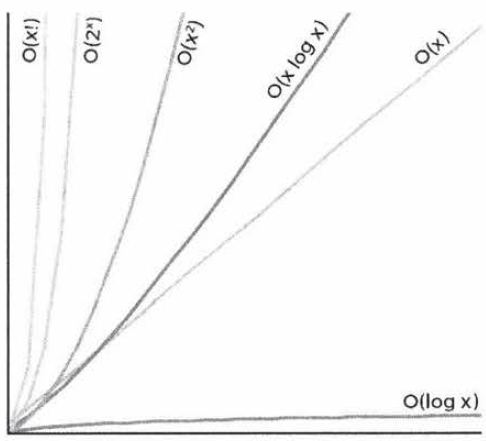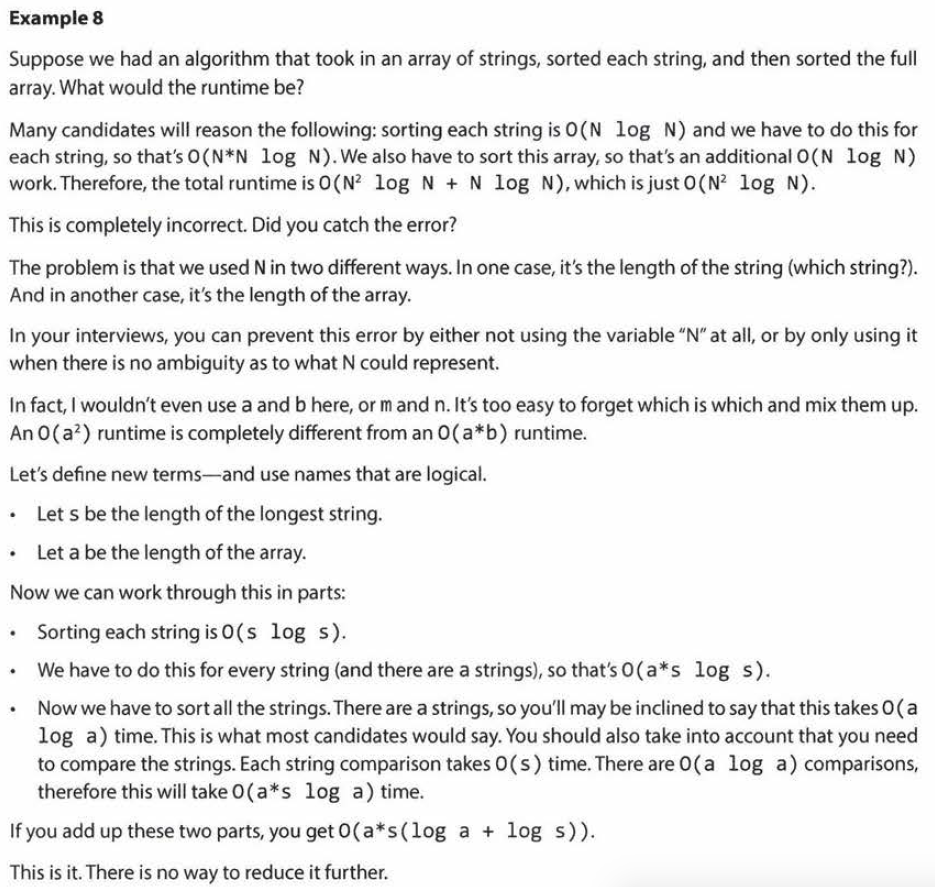The efficiency of algorithms
Page content
Time complexity
-
Multiple variables can be found in your runtime.
O(whp)- i.e.
O(AB)for A: for B: end: end
-
We drop the constants in runtime.
O(2N)=O(N)
-
Drop the non-dominant terms.
O(N^2+ N)=O(N^2)
-
When there is no established relationship between N and M, so we have to keep both variables in there.
O(M + N)=O(M + N)

$$ Big\ O $$
- An upper bound on the runtime.
- The algorithm is at least as fast as the given time.
$$ Big\ Omega\ (\Omega) $$
- A lower bound on time.
- The algorithm won’t be faster than the given time.
$$ Big\ Theta\ (\Theta) $$
- If the algorithm is both big Omega and big O.
Description of runtime for an algorithm: Best, worst, and expected cases
- There is no particular relationship between the concepts.
- They describe the big O or (big theta) time for particular inputs or scenarios.
- Upper, lower, and tight bounds for the runtime.
Space complexity
- The amount of memory required by an algorithm.
Amortized time complexity
- When an algorithm has a very bad time complexity only once in a while beside the time complexity that happens most of the time.
- i.e. When the array is fulfilled, the cost of insertion is in
O(n). Otherwise, the cost isO(1).
- i.e. When the array is fulfilled, the cost of insertion is in
- Average time is taken per operation if you do many operations.
- Ref
Log N runtimes
- When you see a problem where the number of elements gets halved each time, that will likely be an
O(log N)runtime.- Logic: How many times we can multiply 1 by 2 until we get N?
- i.e. No. elements = 8 => No. elements 4 => No. elements 2 => No. elements 1 (3 times)
- Logic: How many times we can multiply 1 by 2 until we get N?
Recursive runtimes
- When you have a recursive function that makes multiple calls, the runtime will often look like
O(branches ^ depth), where branches are the number of times each recursive call branches.
Big O examples

Prime numbers: If n is divisible by a number greater than its square root, then it’s divisible by something smaller than that. O(sqrt(n))
.png)
O(a/b)
More questions in cracking the coding interview book.